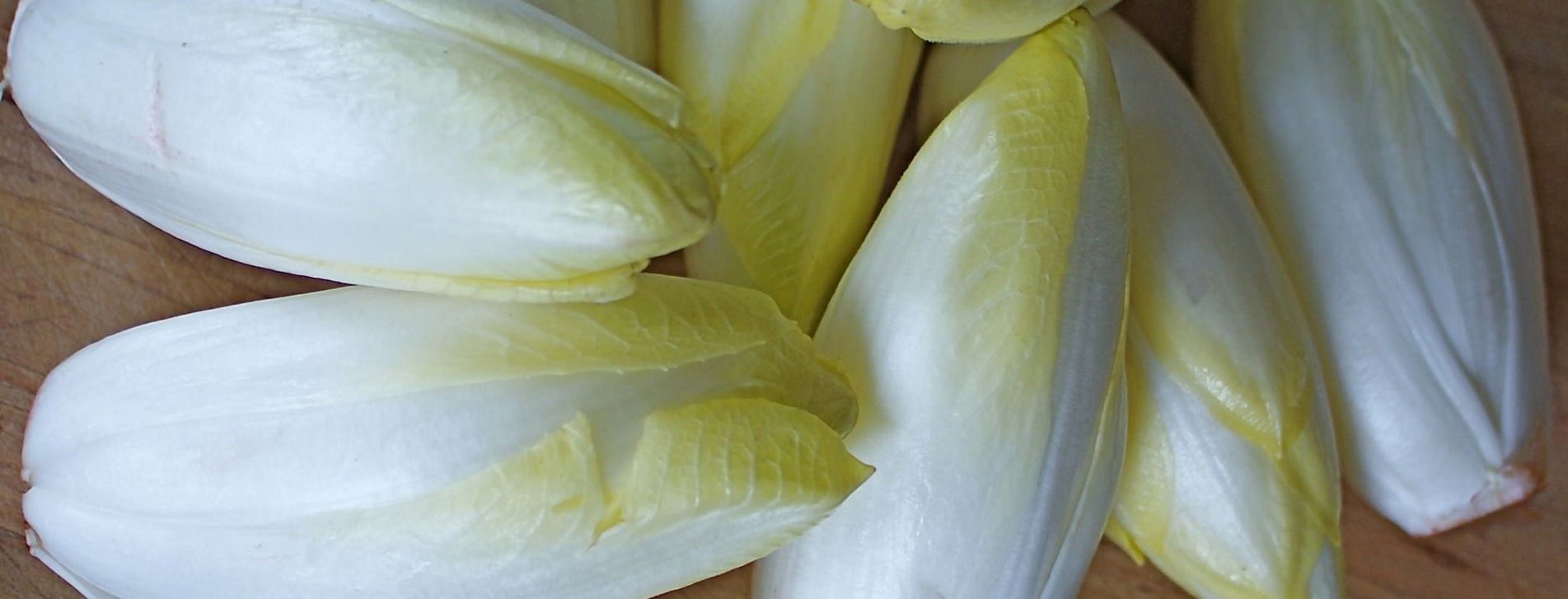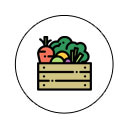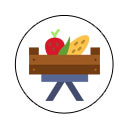February and March represent a transitional period for the fruit and vegetable section. The winter products, apples and citrus fruits are still well in place, but we already observe a sign that spring is around the corner with the arrival of the first strawberries, from Morocco or Spain. For the vegetable section, the soup products, leek, turnip and carrots are a priority, while the endives are at the best of their annual sales.

ORGANIZING YOUR SELECTION OF FRUITS AND VEGETABLES IN FEBRUARY/MARCH
ENDIVES FOCUS
Marketed all year round on the stalls, the endive reaches it consumption peak at the first quarter where it can represent up to 6% of the sales of the fruit and vegetable section. It comes the chicory lettuce family together with the curly chicory and the escarole.
Its production takes place in 3 stages: root harvest, indoor forcing and the “breaking”. The endive seeds are sown in spring and produce plants with long roots. In autumn, the leaves are cut, then the roots are pulled out of the ground and stored in cold rooms. Close to 0°C temperatures maintain the root in a vegetative rest. As soon as they are needed for commercialization, these roots are ready for forcing, that is to be cultivated. There are placed in boxes with nutritive elements necessary for the development of bud on the root. The process takes place in the dark, at a temperature between 14 and 16 °C included. After 21 days, the buds also called “chicon” are ready to be harvested: it’s “breaking” time, processed which entails separating the buds from the root, which is destroyed afterwards. The “chicons” are peeled, trimmed, sorted then packed. This cultivation mode allows to not depend on the climatic changes and therefore, the price is less influenced by strong fluctuations.
In the store, the basic offer can be available in a 1kg packet or in bulk. It should be noted that the new regulations say that they can be sold prepacked by indicating the number of items inside and not the weight. This possibility allows to segment the endive offer by type of use: baking, braising, aperitif or salad. Endives are therefore sold by 2, 4 or more according to the culinary destination, which allows for a wide range for the customers. In recent years, a new red endive has appeared on the market called Carmine. It comes from a natural cross-fertilization between the chicory endive and the Italian chicories Verone and Chioggia, which gives it a fresh and crunchy character. It is mainly offered in plastic wrapped tub. For those who wish to back the offer, Barbucine is a capuchin’s beard chicory, a salad of the olden times that endive farmers have decided to bring back into fashion. It has long, narrow and jagged leaves, like the dandelion, and yellow. It can be eaten raw in a salad or braised in a pan. Barbucine also goes well with red beetroot or apples. Not very presentable, but well appreciated for its taste.

MERCHANDISING
Endives can be planted with other green salads. They are buds in the botanical sense. This distinctive feature explains why they turn green quickly with light which favours chlorophyll development. Turning green correlates with high temperature. Be careful not to expose them to too much and under direct light. It is better to protect them with a blue film over their packaging. The cutting point is subject to oxidation, do not hesitate to work on it again.

STAGING
Endives are fragile and their staging can therefore be complicated. However, by playing with the segmentation effect and the wide varietal offer, you can work on putting them forward. The products will need to be unloaded delicately in baskets without displaying too much in quantity and by leaving the rest in the fridge. Better restock several times per day instead of putting everything in the morning as this will preserve the quality of the products. This dramatization can be supplemented with nuts and beetroots. We can also add raisins for reference that they can be used in salads or aperitifs.
Check out the endive producers’ site for recipes to go with your presentation and which can encourage your customers into buying your products: www.endive.fr/les-recettes


